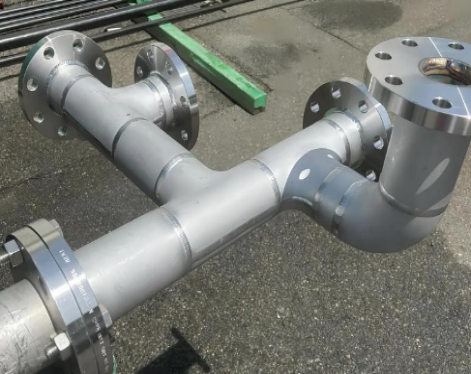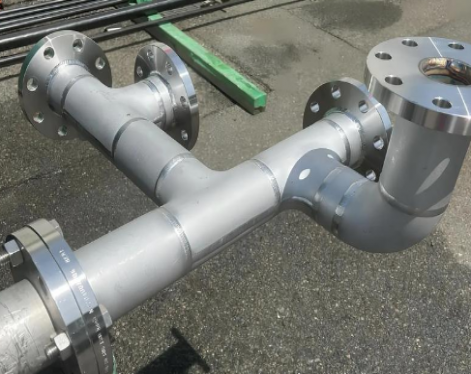Pipe spool fabrication and installation are essential processes in modern engineering projects, particularly in industrial facilities where accuracy, reliability, and safety are crucial. Although pipe spools are widely used in fields such as oil and gas, shipbuilding, power generation, and chemical processing, the concept can be unfamiliar to those outside the industry. Understanding what pipe spools are, how they are produced, and how they are installed helps clarify why they are such a critical component in large-scale piping systems.
Their importance lies in the role they play within the broader piping network. Much like veins and arteries transporting essential fluids in the human body, pipe spools ensure that liquids, gases, vapors, or slurries move efficiently through processing facilities. In industries where high pressure, temperature extremes, or corrosive environments are common, pipe spools must maintain structural integrity and consistent performance.

1.Pipes
The primary component through which the fluid flows. They may be carbon steel, stainless steel, alloy steel, or specialized materials for high-temperature or corrosive environments.
2.Flanges
Flanges connect two piping sections. They are typically bolted together to provide a secure, leak-free joint. In some designs, alternative joining methods such as couplings, grooved joints, or shouldering rings may be used.
3.Fittings
These include elbows, tees, reducers, and other shapes that direct or divide flow across the piping system. They define how the piping route transitions from one direction or diameter to another.
Together, these components create a complete, ready-to-install piping section that integrates seamlessly into the overall system.
a. Material Preparation
Pipes and fittings are inspected, cut, beveled, and cleaned to meet project specifications and material standards such as ASME, ASTM, or API.
b. Fit-Up and Alignment
The components are positioned using fixtures and fit-up tools to match the drawing dimensions. Proper alignment ensures weld quality and prevents stress during installation.
c. Welding
Certified welders perform welding using approved procedures (WPS/PQR). Common welding methods include GTAW/TIG, SMAW, GMAW/MIG, and FCAW. Each weld undergoes visual inspection and may require additional NDT such as UT, RT, or PT.
d. Quality Inspection
Fabricated spools must pass dimensional checks, pressure tests, and surface inspections. These tests confirm that the spool meets the requirements for pressure rating, temperature tolerance, and structural integrity.
e. Surface Treatment and Marking
Depending on the application, spools may be painted, galvanized, insulated, or pickled & passivated. Each spool is then tagged with identification numbers for easy tracking during installation.
a. Site Preparation
Supports, hangers, and structural elements must be inspected to ensure correct elevation and alignment.
b. Assembly and Positioning
Spools are lifted into place using hoists or cranes. Installers align the centerlines, flanges, and fittings precisely according to the drawings.
c. On-Site Welding or Bolting
While most joints are preassembled, some require on-site welding or flange bolting. Installers must ensure proper torque, gasket placement, and weld consistency.
d. System Testing and Commissioning
After assembly:
Pressure testing verifies leak-tightness
Visual and NDT inspections confirm weld quality
Insulation and painting are applied as required
Proper commissioning ensures that the piping system is ready for safe and reliable operation.
What Are Pipe Spools ?
Pipe spools are prefabricated sections of a piping system made in controlled workshop environments. They generally include pipes, fittings, flanges, valves, and other components assembled according to engineering drawings and project specifications. These prefabricated units are produced to exact dimensions so they can be quickly and accurately installed on site.Their importance lies in the role they play within the broader piping network. Much like veins and arteries transporting essential fluids in the human body, pipe spools ensure that liquids, gases, vapors, or slurries move efficiently through processing facilities. In industries where high pressure, temperature extremes, or corrosive environments are common, pipe spools must maintain structural integrity and consistent performance.

Main Components of Pipe Spools
While pipe spools can vary based on project requirements, most contain three fundamental components:1.Pipes
The primary component through which the fluid flows. They may be carbon steel, stainless steel, alloy steel, or specialized materials for high-temperature or corrosive environments.
2.Flanges
Flanges connect two piping sections. They are typically bolted together to provide a secure, leak-free joint. In some designs, alternative joining methods such as couplings, grooved joints, or shouldering rings may be used.
3.Fittings
These include elbows, tees, reducers, and other shapes that direct or divide flow across the piping system. They define how the piping route transitions from one direction or diameter to another.
Together, these components create a complete, ready-to-install piping section that integrates seamlessly into the overall system.
Pipe Spool Fabrication Process
Pipe spool fabrication transforms engineering drawings into physical components ready for installation. The typical fabrication workflow includes:a. Material Preparation
Pipes and fittings are inspected, cut, beveled, and cleaned to meet project specifications and material standards such as ASME, ASTM, or API.
b. Fit-Up and Alignment
The components are positioned using fixtures and fit-up tools to match the drawing dimensions. Proper alignment ensures weld quality and prevents stress during installation.
c. Welding
Certified welders perform welding using approved procedures (WPS/PQR). Common welding methods include GTAW/TIG, SMAW, GMAW/MIG, and FCAW. Each weld undergoes visual inspection and may require additional NDT such as UT, RT, or PT.
d. Quality Inspection
Fabricated spools must pass dimensional checks, pressure tests, and surface inspections. These tests confirm that the spool meets the requirements for pressure rating, temperature tolerance, and structural integrity.
e. Surface Treatment and Marking
Depending on the application, spools may be painted, galvanized, insulated, or pickled & passivated. Each spool is then tagged with identification numbers for easy tracking during installation.
Pipe Spool Installation
Once fabrication is complete, the spools are transported to the jobsite for installation. The installation process includes:a. Site Preparation
Supports, hangers, and structural elements must be inspected to ensure correct elevation and alignment.
b. Assembly and Positioning
Spools are lifted into place using hoists or cranes. Installers align the centerlines, flanges, and fittings precisely according to the drawings.
c. On-Site Welding or Bolting
While most joints are preassembled, some require on-site welding or flange bolting. Installers must ensure proper torque, gasket placement, and weld consistency.
d. System Testing and Commissioning
After assembly:
Pressure testing verifies leak-tightness
Visual and NDT inspections confirm weld quality
Insulation and painting are applied as required
Proper commissioning ensures that the piping system is ready for safe and reliable operation.









